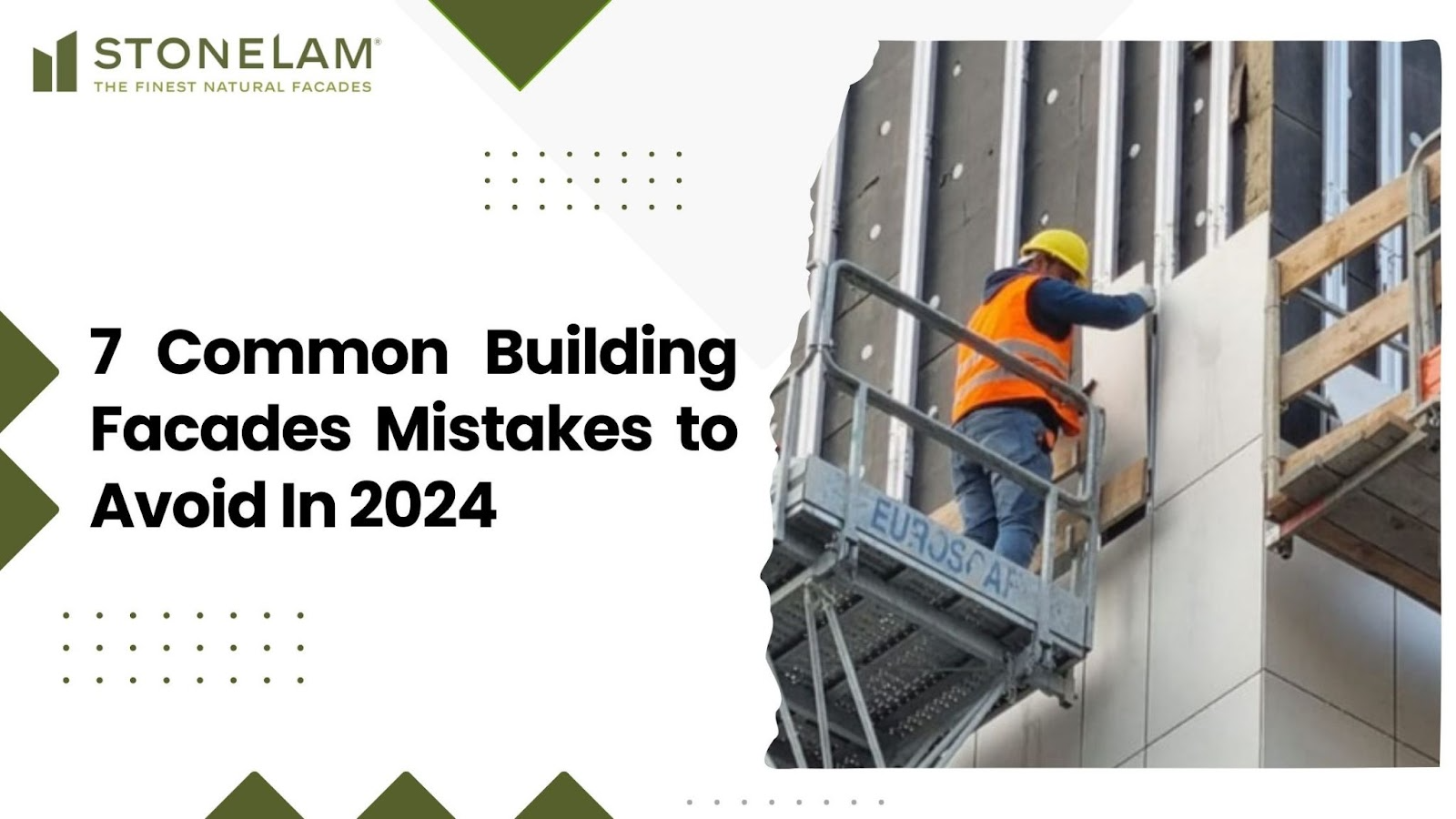As we roll into 2024, Architects and builders find themselves balancing between modern trends and traditional wisdom, making choices that impact aesthetics and functionality. Our blog will take a look at building facade designs by highlighting 7 common mistakes relevant to today’s architectural scene. Remember, a facade isn’t just a pretty face – it affects energy use, occupant comfort, and the overall vibe of a structure.
In 2024, architects face the challenge of combining timeless principles with new technologies and eco-friendly practices. We’ll share insights to help professionals and enthusiasts sidestep common slip-ups and inspire practical and good-looking designs.
1. Not Picking The Suitable Facade Material
One of the fundamental building blocks in the exterior design is the choice of facade materials. It’s not just about what looks good but what stands up to the test of time and environmental factors. Neglecting this aspect often leads to a cascade of issues that can compromise both the aesthetic appeal and structural integrity of building facades. The wrong facade materials can succumb to weathering, necessitating frequent repairs and inflating maintenance costs. In regions with specific climate challenges, such as heavy rainfall or extreme temperatures, the choice of material becomes even more critical.
2. Ignoring Sustainability in Material Choices
As societies worldwide increasingly prioritize eco-conscious practices, architects and builders must integrate sustainability into every facet of their project. The environmental footprint of chosen materials extends beyond the construction phase, affecting the building facade’s overall lifecycle. By ignoring sustainability, projects risk contributing to pollution, resource depletion, and increased waste generation. This contradicts current environmental goals and can result in regulatory hurdles and a tarnished reputation.
3. Not Keeping Maintenance In Mind
Overlooking maintenance needs can result in unforeseen expenses and a diminished aesthetic appeal over time. Building Facades exposed to varying weather conditions, pollution, and wear and tear demand careful planning to ensure they retain their allure without becoming a financial burden.
In the architecture world of 2024, where longevity is as crucial as initial aesthetics, the importance of low-maintenance facade materials and commercial facade design must be considered. Failure to keep maintenance in mind can lead to unforeseen expenses and detract from the visual impact of a building over time.
4. Overlooking Energy Efficiency
One of the pivotal oversights in contemporary commercial facade design is neglecting energy efficiency considerations. Overlooking this crucial aspect can have far-reaching consequences, impacting operational costs and environmental sustainability.
The facade serves as a primary interface between the building’s interior and the external environment, making its design a key determinant of energy performance. Failure to integrate energy-efficient principles may result in excessive heat gain or loss, increased reliance on artificial lighting and heating systems, and a subsequent spike in energy bills. In 2024, where the global focus on sustainable practices has never been more pronounced, it is imperative to prioritize energy efficiency in commercial facade design. This involves strategic material selection, incorporation of adequate insulation, and thoughtful design configurations that harness natural elements for optimal thermal comfort.
5. Disregarding Local Context and Climate
In India, each locale boasts specific climatic conditions and architectural traditions that affect building facades decisions. Ignoring these factors can result in inefficient designs, discomfort for occupants, and a missed opportunity to contribute to the area’s cultural landscape.
Architects and builders are urged to consider the broader impact of their commercial facade design choices, ensuring that the facades they create seamlessly integrate with the local context. This involves understanding and adapting to the local climate, harnessing natural elements, and embracing materials that resonate with the community’s cultural identity.
6. Neglecting Safety Considerations
Safety encompasses various factors, including structural stability, fire resistance, and emergency evacuation procedures. These aspects need to be prioritized to avoid potential hazards, legal complications, and a compromised sense of security for those within the space. This is a common mistake of neglecting safety considerations and emphasizing the importance of integrating safety measures seamlessly into facade design. It underscores the need to select facade materials that meet safety standards, ensure proper load-bearing capacity, and incorporate features that facilitate emergency response protocols.
7. Not Focusing On Material Compatibility and Longevity
Neglecting the compatibility between chosen facade materials can result in premature deterioration, compromising aesthetic appeal and structural integrity. The selection of facade materials should go beyond individual aesthetic preferences, considering factors such as their compatibility with each other and the environment. Failure to do so may lead to issues like corrosion, discolouration, or uneven wear, diminishing the facade’s visual coherence over time.
Achieving Facade Excellence With Stonelam
Stonelam, a cutting-edge composite material blending the timeless natural stone elegance beautified with modern technology, addresses many of the challenges highlighted in our discussion. Its durability, adaptability, and aesthetic versatility make it an ideal choice for architects to overcome the pitfalls associated with traditional facade materials.
Stonelam emerges as a number 1 choice that mitigates common mistakes and elevates the potential for architectural excellence for building facades. By opting for Stonelam, architects and builders can create commercial facade designs that withstand the test of time and embody a synthesis of durability, aesthetics, and environmental responsibility.



